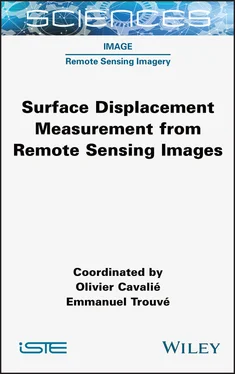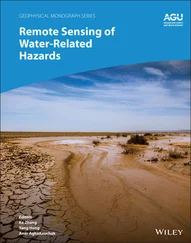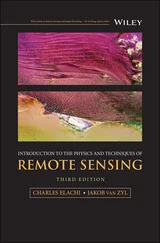Data access: All Sentinel-1 products are freely accessible via the Copernicus hub ( https://scihub.copernicus.eu/dhus/) or on mirror sites such as PEPS ( https://peps.cnes.fr/). In contrast to the Copernicus hub, PEPS do not archive RAW data, but only processed single-look complex (SLC), ground range detected (GRD) and wave mode data. The archive began on October 3, 2014. Other products directly derived from the Sentinel-1 data and showing ground motion for European land are freely available through a Copernicus service ( https://www.copernicus.eu/en/events/events/onlineeuropean-ground-motion-service-copernicus).
ICEYE-X1, launched in January 2018, is the first SAR microsatellite of Finland’s operational commercial constellation Iceye Ltd, a startup company from Espoo. The ICEYE-X1 cube (70 cm side) weighs under 100 kg, which is less than a twentieth of Sentinel-1. This size reduction produces a strong reduction in the cost too. The global imaging constellation will consist of 18 small satellites, allowing less than a few hours for revisit. ICEYE’s satellite constellation in the X-band is growing, with additional spacecraft being produced and launched each year: in December 2018, ICEYE-X2 was launched. The ICEYE-X3 payload, launched on May 5, 2019, was a demonstration mission, dedicated to the US Army. ICEYE-X4 and -X5 were launched on July 5, 2019, with a Soyuz-2-1b rocket, and ICEYE-X6 and -X7 were launched on September 28, 2020. ICEYE-X8 and -X9 followed in January 2021. The Finnish company launched four additional SAR satellites at the end of 2020 and planned to launch an additional eight in 2021. The company offers X-band SAR data in several imaging modes, including very high resolutions in single-look complex and ground range detected image formats. ICEYE’s satellites are capable of imaging in stripmap, spotlight and ScanSAR modes in VV polarization.
Data access: See https://www.iceye.com. The Finnish New Space Economy company ICEYE is now providing radar imaging data from its commercial SAR satellite constellation to the International Charter “Space and Major Disasters” at no cost for use in monitoring and response activities.
This section presents the main SAR missions that have been decided on and that will use interferometric measurements. We must note that many SAR systems are planned to arrive on the market, more than ever before, with very cheap and light payloads. In most of the cases, the orbit is not maintained, and if interferometry is theoretically possible between two passes, it must be seen more like an opportunity rather than a dedicated application. For these reasons, these missions are not detailed here.
TerraSAR-NG is an improved system continuing the X-band TSX/TDX/PAZ missions. Initially, one satellite is forecast, and one of the aims is to implement a 1,200 MHz bandwidth and reach a 0.25 m resolution on the ground. ITU regulations incorporated the demand in 2015 (see section 1.1.2on central frequency and bandwidth). Another improvement is the implementation of a TOPSAR system for different ScanSAR modes.
ALOS-4, planned to be launched in 2022, is a successor of the Japanese SAR L-band missions ALOS and ALOS-2. Its PALSAR3 instrument will be primarily activated with right-side looking and in a stripmap mode with an increased 200 km swath (compared to 50 km with the ALOS-2 PALSAR2), while maintaining the high temporal resolution with a revisit time of 14 days and covering an incidence angle from 30 to 44°; the other beams (ScanSAR and spotlight modes) and left-side observation are used for quick disaster monitoring. The ALOS-4 will be equipped with an AIS receiver, as with the ALOS-2, for maritime surveillance purposes. To deal with the deforestation issue, ALOS-4 will conduct observations more frequently, with five times more precision, in order to detect smaller deforestation areas than ALOS-2. ALOS-4 will acquire data more frequently than ALOS-2; thus, interferometric data will lead to more efficient infrastructure maintenance.
The NASA and Indian Space Research Organisation (ISRO) NISAR mission with both L-band and S-band wavelengths is dedicated to and optimized for studying hazards and global environmental change. NISAR, planned to be launched in 2022, will observe Earth’s land and ice-covered surfaces at 3–10 m resolution globally, with 12-day regularity on ascending and descending passes, sampling Earth on average every six days for a baseline three-year mission. As NISAR will be only left-looking, it will be a major asset for mapping Antarctica, while Sentinel-1, with a similar large mission coverage, is already undertaking right-looking operations.
NASA contributions include the L-band SAR instrument, with a 12 m diameter deployable mesh reflector, 9 m deployable boom and octagonal instrument structure. In addition, NASA will deploy a high-capacity solid-state recorder (approximately 9 Tbits at end of life), GPS, a 3.5 Gbps Ka-band telecom system and an engineering payload to coordinate command and data handling with the ISRO spacecraft control systems.
The ISRO will provide the spacecraft and launch vehicle, as well as the S-band SAR electronics to be mounted on the instrument structure. The coordination of technical interfaces among subsystems is a major focus area in the partnership. Orbit control within 350 m and a pointing control shorter than 273 arcseconds will enable good accuracy to follow deformation by InSAR.
Data access: As mentioned by NASA (2019), the science teams and algorithm development teams at NASA and the ISRO will work jointly to create a common set of product types and software. The project will deliver NISAR data to NASA and the ISRO for archiving and distribution. NASA and the ISRO have agreed to a free and open data policy for these data. All NISAR science data (L- and S-band) will be freely available and open to the public, consistent with the long-standing NASA Earth Science open data policy.
The target strategy assigns a single radar mode to a given area on Earth. Where target areas overlap, the modes are compatible so that no science discipline loses information. This set of global target types and associated radar modes will provide each of the individual disciplines with the data they need for their science. The observation plan calls for nearly continuous global coverage over land and ice. India has planned specific radar modes to fulfill ISRO’s science requirements for the mission. For the rest of the globe, the most inclusive radar mode was chosen where conflicting science discipline needs were identified.
This mission has been selected as part of the ESA’s Earth Observation Program (Earth Explorer 7) and will be able to operate, for the first time in space, a P-band imaging radar at 70 cm wavelength. At this frequency (435 MHz), the ITU allocation is limited to a 6 MHz bandwidth: the program will address key information issues over forested areas, at low-resolution cells. A large circular antenna of 12 m will be used.
Different applications are foreseen to exploit penetration through tropical forests, with SAR polarimetry and PolInsar interferometry as well as tomography. Different phases and orbit changes will be used along the mission to achieve different purposes and fulfill these applications, with different baselines from different orbits. The first option is a coverage with a double baseline using three interleaved swaths, a low repeat cycle and then a change of altitude to ensure a new coverage; complete coverage would need five months before coming back to the same tracks. The second option is a sub-cycle of three or four days, and a total cycle of 27 or 36 days, then a repetition every five months (Hélière et al . 2016). The coverage is determined by three adjacent stripmap modes with swaths of 60, 50 and 40 km, implying a roll maneuver to change swath (Arcioni et al . 2013).
Читать дальше












